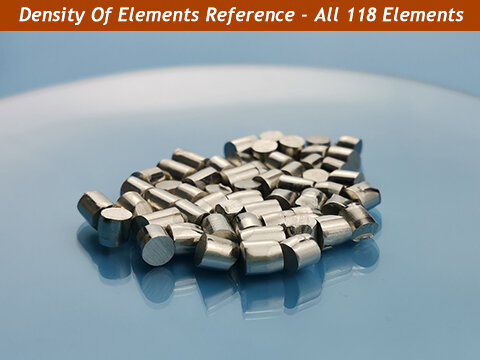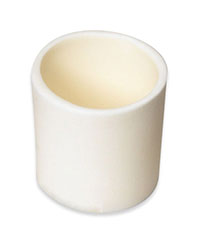 +86-731-89578196
+86-731-89578196
 [email protected]
[email protected]
- Home
- Our Company
-
Products
Sputtering Targets

- Industries
- Blog
- FAQ
- Contact Us
Density Of Elements Reference - From Light to Heavy (118 Elements)

Looking for an easy-to-use guide on the density of elements? Our guide covers the density of all 118 elements in one handy resource. Whether you're a student studying chemistry, a professional working in the field, or just curious about the building blocks of our universe, this guide is a must-have. We've researched and compiled data on the density of each element in an accurate and reliable way.
From the lightest element, hydrogen, to the heaviest, oganesson, our guide will introduce you to the periodic table and the unique properties of each element. With our simple layout and clear descriptions, finding the density of any element has never been easier. So, start exploring the world of elements with our comprehensive density guide!
What is density and how do we calculate it?
Density is a way to describe how tightly packed the particles of a substance are. It tells us how much mass is in a certain amount of space. The formula to calculate density is easy: density = mass/volume. By figuring out the mass and volume of a substance, we can calculate its density and learn more about its physical and chemical properties.
Density is usually measured in grams per cubic centimeter (g/cm³) or kilograms per cubic meter (kg/m³). It's an important concept to understand in many fields of science, like chemistry, physics, and materials science. Density is an intensive property, which means it doesn't depend on how much of the substance there is. For example, a gold ring and a gold nugget may have different masses, but they'll have the same density if they're made of the same material.
The density of the Elements Table
Why it's important to know the density of elements:
The density of elements tells us a lot about how they behave and what we can use them for. Here are some reasons why it's important:
-
Identifying and understanding materials:
Density helps scientists figure out what things are made of. They can compare the density of something they don't know with something they do know to figure out what's in it. This is really helpful in solving crimes.
-
Choosing materials:
Density is important when we pick which materials to use for things. For example, in aerospace engineering, we want to use lightweight materials with low density to save fuel and make things more efficient. But sometimes we want to use materials with high density to protect us from radiation.
-
Understanding how fluids work:
Fluid mechanics is all about how liquids and gases behave. Density affects how they move and how much pressure they create. Understanding density helps us make efficient pumps, turbines, and other fluid-based systems.
-
Protecting the environment:
Knowing how dense something is can help us understand how it will behave in the environment. If something is less dense than water, it will float. If it's more dense, it will sink. This is important when we deal with things like oil spills and pollution in the air.
Common uses of high-density elements
High-density elements are special materials that have unique properties that make them useful in many different ways. Here are some examples:
Lead (Pb):
Lead is a dense material that can block harmful radiation. Doctors use it to protect themselves and their patients from radiation during medical procedures. Lead is also used in batteries and bullets, and to join metal parts together.
Platinum (Pt):
Platinum is a very strong and durable metal that is used to help make chemical reactions happen faster. This is important for things like making gasoline for cars and for making fertilizer for plants. Platinum is also used in jewelry and electronics.
Uranium (U):
Uranium is a special material that can be used to make electricity. It's used in nuclear power plants to create energy for our homes and businesses. Uranium is also used in medicine to help diagnose and treat diseases.
Tungsten (W):
Tungsten is a very strong metal that can handle high temperatures. It's used to make things like light bulbs and X-ray machines. Tungsten is also used in electronics and to make things like airplane parts and race car engines.
Iridium (Ir):
Iridium is a very rare metal that is used in special applications. It's used in spark plugs to help cars start and in pens to make them write smoothly. Iridium is also used in things like Iridium sputtering target.
Remember, these are just a few examples of how high-density elements are used every day!
Common uses of low-density elements
Low-density elements are special elements that have many uses in different things. Here are some examples of low-density elements and their uses:
Hydrogen (H):
Hydrogen is the lightest element in the universe. It is used as a fuel for things like rockets and cars. It can also be used to make fertilizer to help plants grow.
Helium (He):
Helium is a gas that is used to make balloons float. It is also used to cool things like MRI machines in hospitals and welding torches in factories.
Lithium (Li):
Lithium is a metal that is used to make things lighter. For example, it can be used to make airplanes and cars lighter so they use less fuel. It is also used to make rechargeable batteries.
Beryllium (Be):
Beryllium is a metal that is used to make things strong and light. It is used in things like airplanes and satellites. It is also used to make mirrors for lasers.
Carbon (C):
Carbon is a special element that can exist in different forms. One form, called graphite, is used as a lubricant and to make batteries. Another form, called diamond, is used to make jewelry because it is very hard and sparkly.
Conclusion
Elements are tiny building blocks that makeup everything around us. They have different sizes and weights that help us understand how they behave. Scientists use a table to organize them in a way that helps them study and discover new things.
By learning about the Density of Elements Table, we can learn more about how the world works and make cool discoveries. So, when you think about how amazing the world is, remember that these tiny building blocks are a big part of it all.











